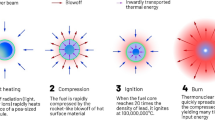Abstract
A low-energy ion spectrometer (LEIS) for use aboard three-axis stabilized spacecraft has been developed to measure ion energy per charge distribution in three-dimensional space with good energy-, angular- and temporal-resolutions. For the standard top-hat electrostatic analyzer used widely in space plasma detection, three-axis stabilized spacecraft makes it difficult to obtain complete coverage of all possible ion arrival directions. We have designed angular scanning deflectors supplementing to a cylindrically symmetric top-hat electrostatic analyzer to provide a half-space field of view as 360°×90° (–45°–+45°), and fabricated the LEIS flight model for detecting magnetospheric ions in geosynchronous orbit. The performance of this payload has been evaluated in detail by a series of simulation and environmental tests, and the payload has also been calibrated through laboratory experiments using a low-energy ion source. The results show that capabilities of the LEIS payload are in accordance with the requirements of a magnetospheric mission.
Similar content being viewed by others
References
Carlson C W, Curtis D W, Paschmann G, et al. An instrument for rapidly measuring plasma distribution functions with high resolution. Adv Space Res, 1982, 2: 67–70
Young D T, Bame S J, Thomsen M F, et al. 2p radian field of view toroidal electrostatic analyzer. Rev Sci Instrum, 1988, 59: 743–751
Lin R P, Anderson K A, Ashford S, et al. A three-dimensional plasma and energetic particle investigation for the wind spacecraft. Space Sci Rev, 1995, 71: 125–153
Rème H, Cotin F, Cros A, et al. The giotto electron plasma experiment. J Phys E: Sci Instrum, 1987, 20: 721
Barabash S, Sauvaud J A, Gunell H, et al. The analyser of space plasmas and energetic atoms (ASPERA-4) for the venus express mission. Planet Space Sci, 2007, 55: 1772–1792
Reme H, Bosqued J M, Sauvaud J A, et al. The cluster ion spectrometry (CIS) experiment. Space Sci Rev, 1997, 79: 303–350
Rème H, Aoustin C, Bosqued J M, et al. First multispacecraft ion measurements in and near the earth’s magnetosphere with the identical cluster ion spectrometry (CIS) experiment. Ann Geophys, 2001, 19: 1303–1354
Carlson C W, McFadden J P, Turin P, et al. The electron and ion plasma experiment for fast. Space Sci Rev, 2001, 98: 33–66
Young D T, Berthelier J J, Blanc M, et al. Cassini plasma spectrometer investigation. Space Sci Rev, 2004, 114: 1–112
Barabash S, Lundin R, Andersson H, et al. The analyzer of space plasmas and energetic atoms (ASPERA-3) for the Mars Express Mission. Space Sci Rev, 2006, 126: 113–164
Daglis I A, Thorne R M, Baumjohann W, et al. The terrestrial ring current: Origin, formation, and decay. Rev Geophys, 1999, 37: 407–438
Jordanova V K, Kistler L M, Kozyra J U, et al. Collisional losses of ring current ions. J Geophys Res, 1996, 101: 111–126
Fok M C, Kozyra J U, Nagy A F, et al. Decay of equatorial ring current ions and associated aeronomical consequences. J Geophys Res, 1993, 98: 19381–19393
Miyoshi Y, Kataoka R. Ring current ions and radiation belt electrons during geomagnetic storms driven by coronal mass ejections and corotating interaction regions. Geophys Res Lett, 2005, 32: L21105
Gary S P, Thomsen M F, Yin L, et al. Electromagnetic proton cyclotron instability: Interactions with magnetospheric protons. J Geophys Res, 1995, 100: 21961–21972
Su Z, Wang G, Liu N, et al. Direct observation of generation and propagation of magnetosonic waves following substorm injection. Geophys Res Lett, 2017, 44: 7587–7597
Horne R B, Thorne R M, Glauert S A, et al. Electron acceleration in the Van Allen radiation belts by fast magnetosonic waves. Geophys Res Lett, 2007, 34: L17107
Yang C, Su Z, Xiao F, et al. A positive correlation between energetic electron butterfly distributions and magnetosonic waves in the radiation belt slot region. Geophys Res Lett, 2017, 44: 3980–3990
Su Z, Gao Z, Zhu H, et al. Nonstorm time dropout of radiation belt electron fluxes on 24 September 2013. J Geophys Res Space Phys, 2016, 121: 6400–6416
Funsten H O, Skoug R M, Guthrie A A, et al. Helium, Oxygen, Proton, and Electron (HOPE) mass spectrometer for the radiation belt storm probes mission. Space Sci Rev, 2013, 179: 423–484
Spence H E, Reeves G D, Baker D N, et al. Science goals and overview of the radiation belt storm probes (RBSP) energetic particle, composition, and thermal plasma (ECT) suite on NASA’s Van Allen probes mission. Space Sci Rev, 2013, 179: 311–336
Mann I R, Lee E A, Claudepierre S G, et al. Discovery of the action of a geophysical synchrotron in the Earth’s Van Allen radiation belts. Nat Commun, 2013, 4: 2795
Collinson G A, Dorelli J C, Avanov L A, et al. The geometric factor of electrostatic plasma analyzers: A case study from the fast plasma investigation for the magnetospheric multiscale mission. Rev Sci Instruments, 2012, 83: 033303
Knudsen D J, Burchill J K, Berg K, et al. A low-energy charged particle distribution imager with a compact sensor for space applications. Rev Sci Instrum, 2003, 74: 202–211
Straub H C, Mangan M A, Lindsay B G, et al. Absolute detection efficiency of a microchannel plate detector for kilo-electron volt energy ions. Rev Sci Instrum, 1999, 70: 4238–4240
Author information
Authors and Affiliations
Corresponding authors
Rights and permissions
About this article
Cite this article
Hu, R., Shan, X., Yuan, G. et al. A low-energy ion spectrometer with half-space entrance for three-axis stabilized spacecraft. Sci. China Technol. Sci. 62, 1015–1027 (2019). https://doi.org/10.1007/s11431-018-9288-8
Received:
Accepted:
Published:
Issue Date:
DOI: https://doi.org/10.1007/s11431-018-9288-8




